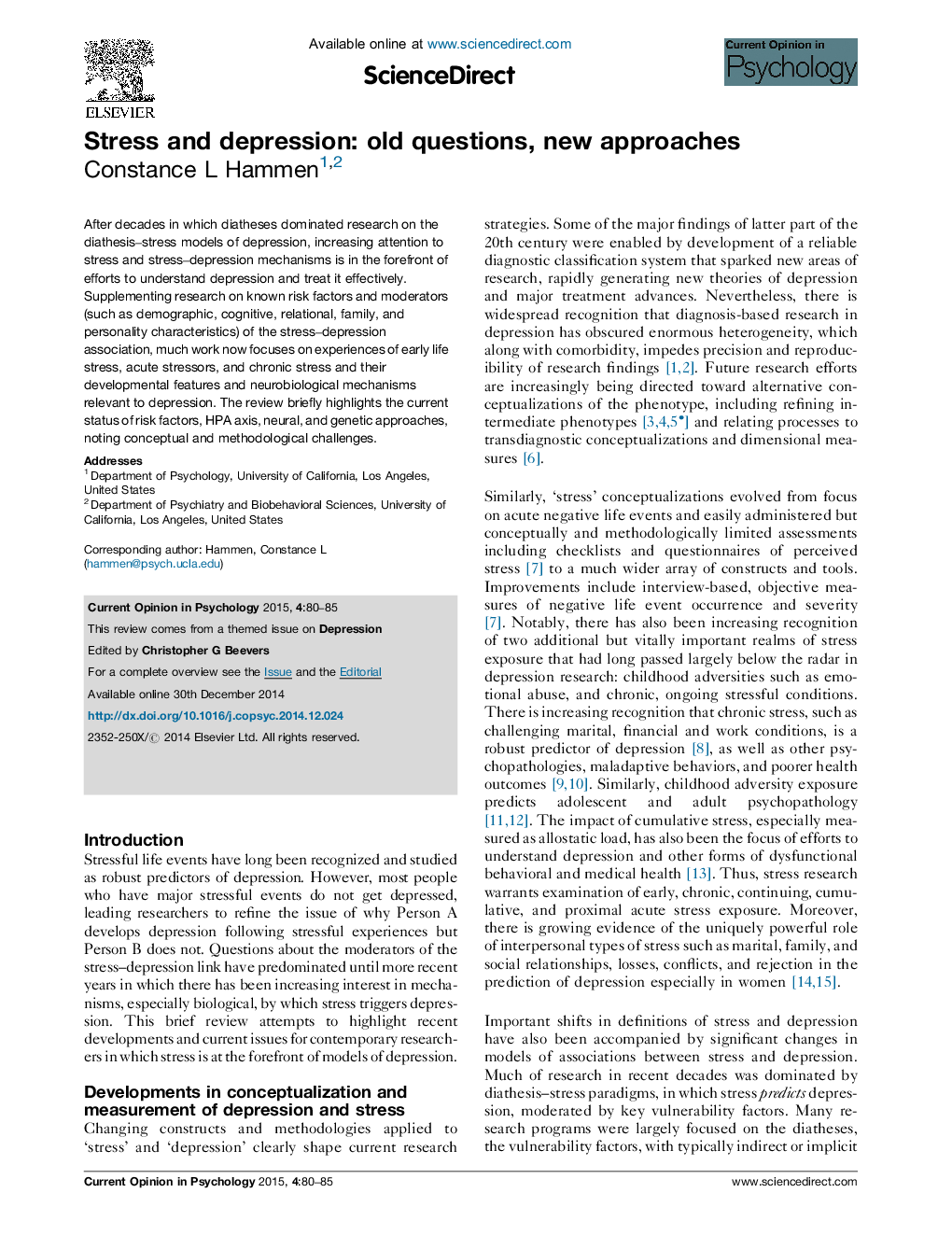| Article ID | Journal | Published Year | Pages | File Type |
|---|---|---|---|---|
| 879490 | Current Opinion in Psychology | 2015 | 6 Pages |
•The stress–depression link is not unidirectional, not static, and not simple.•Early adverse conditions and chronic stress are especially predictive of depression.•Many psychosocial moderators/mediators of the stress–depression link are known.•HPA axis dysfunctions linked to neural structures and functions are central themes.•Integration across multiple levels in longitudinal studies is essential.
After decades in which diatheses dominated research on the diathesis–stress models of depression, increasing attention to stress and stress–depression mechanisms is in the forefront of efforts to understand depression and treat it effectively. Supplementing research on known risk factors and moderators (such as demographic, cognitive, relational, family, and personality characteristics) of the stress–depression association, much work now focuses on experiences of early life stress, acute stressors, and chronic stress and their developmental features and neurobiological mechanisms relevant to depression. The review briefly highlights the current status of risk factors, HPA axis, neural, and genetic approaches, noting conceptual and methodological challenges.
